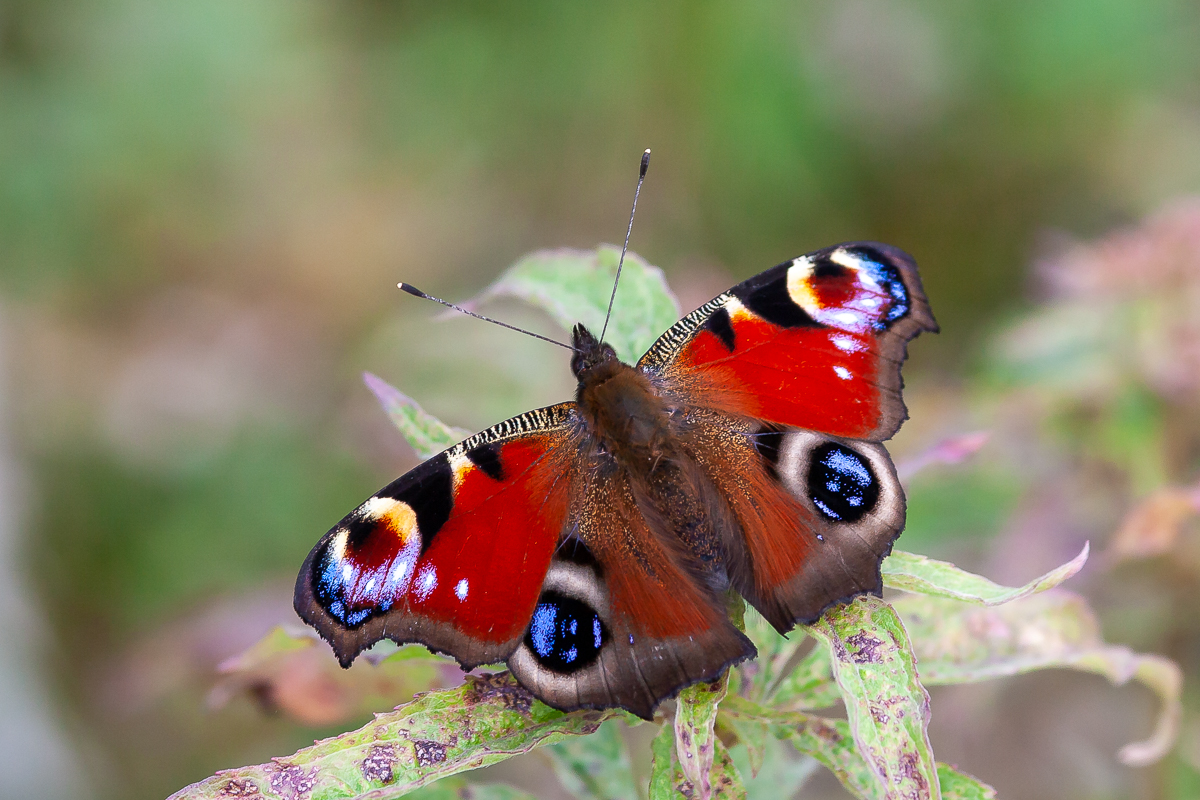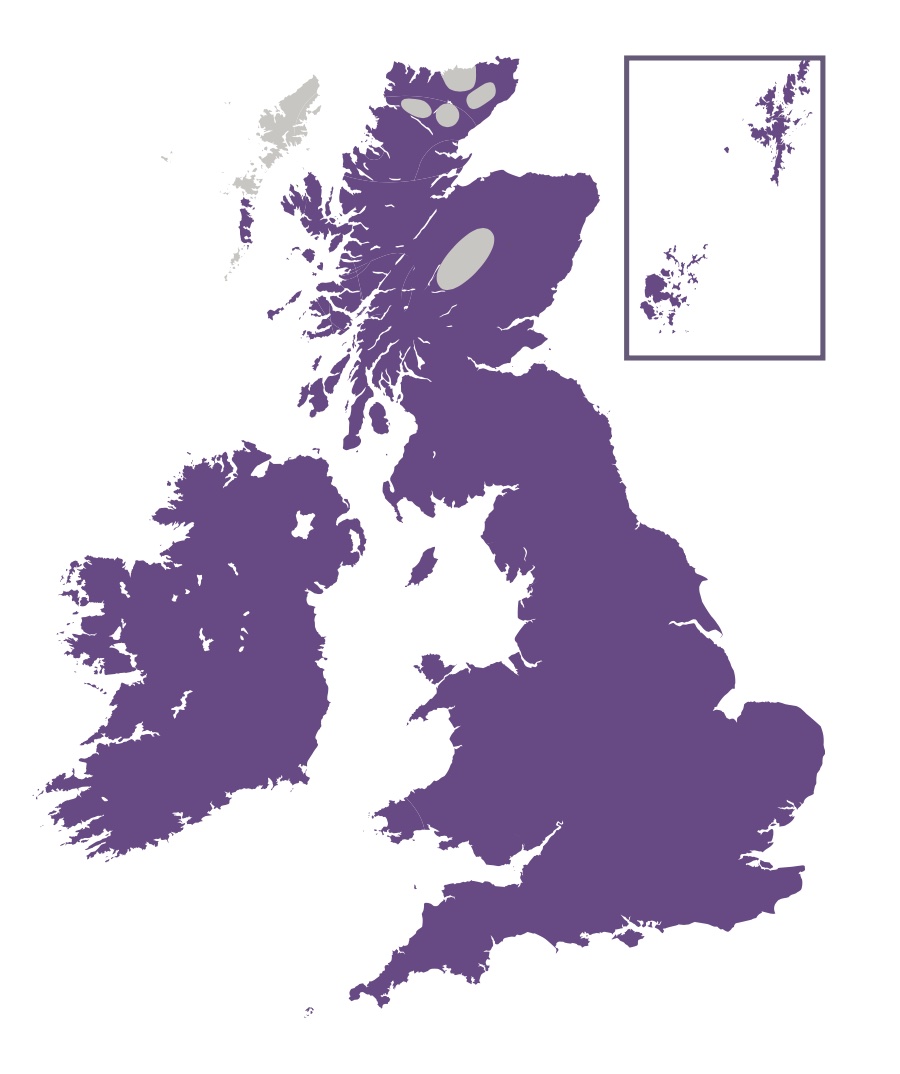
Photo © Peter Eeles
The Peacock is a familiar sight in gardens across the British Isles and is unmistakable, with quite spectacular eyes on the upperside of the hindwings that give this butterfly its name. These eyes must appear very threatening to predators, such as mice, that confront this butterfly head-on.
The underside is a different matter altogether, being almost black, providing perfect camouflage when the butterfly is at rest on a tree trunk, or when hibernating. In addition to camouflage and large eyes, the butterfly is able to make a hissing sound by rubbing its wings together that is audible to human ears. All in all, this butterfly must appear very threatening to any predator that might come across it. This is a highly mobile butterfly that occurs throughout the British Isles, including Orkney and Shetland, although it is not found in parts of northern Scotland. However, its range does seem to be increasing, with sightings from new areas being recorded every year.
The adults spend most of the morning nectaring. Males set up territories around midday, often on the sunny side of a wood, where they wait for a passing female. Males will fly up at any dark object, which is one way of sexing this species since the two sexes are very difficult to tell apart, being almost identical in appearance. When a female is found she flies off, trying to escape the male that is in pursuit. If he succeeds in staying with her then the pair mate. Females subsequently take great care when egg-laying, selecting foodplants that are in full sun.
Adults emerging in summer nectar on a variety of flowers, building up essential body fats before overwintering.

This butterfly can turn up almost anywhere, given its broad distribution. This butterfly is often encountered while hibernating in outbuildings, such as a garage, shed or barn, where they are often in the company of other individuals. Other hibernation sites include hollow trees and wood piles, where their dark undersides provide excellent camouflage.
Adults feed primarily on Betony (Betonica officinalis), Blackthorn (Prunus spinosa), Bluebell (Hyacinthoides non-scripta), brambles (Rubus spp.), Buddleja (Buddleja spp.), Bugle (Ajuga reptans), Common Fleabane (Pulicaria dysenterica), Cuckooflower (Cardamine pratensis), dandelions (Taraxacum spp.), Devil's-bit Scabious (Succisa pratensis), Ground-ivy (Glechoma hederacea), hawkweeds (Hieracium spp.), Hemp-agrimony (Eupatorium cannabinum), ragworts (Jacobaea spp.), Sap (N/A), thistles (Carduus spp. and Cirsium spp.), Water Mint (Mentha aquatica), Wild Marjoram (Origanum vulgare), Wild Privet (Ligustrum vulgare), Wild Teasel (Dipsacus fullonum) and Yarrow (Achillea millefolium).
The primary larval foodplant is Common Nettle (Urtica dioica). Hop (Humulus lupulus) and Small Nettle (Urtica urens) are also used.
